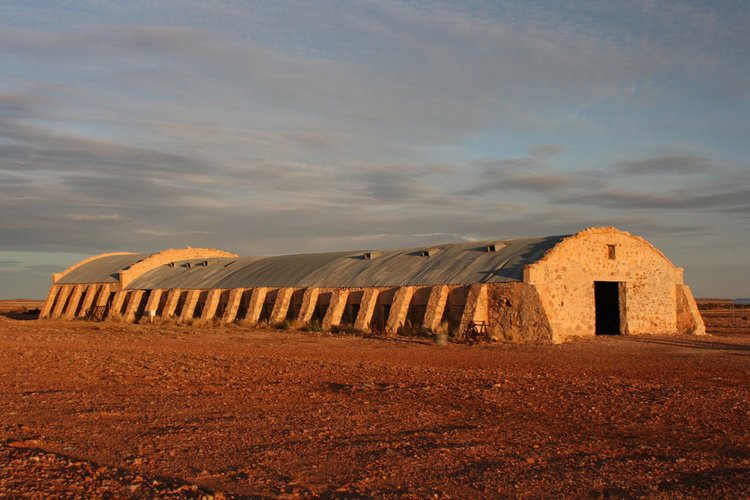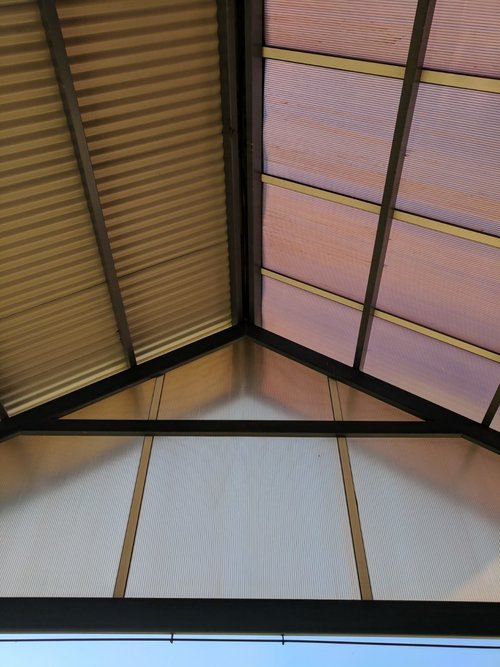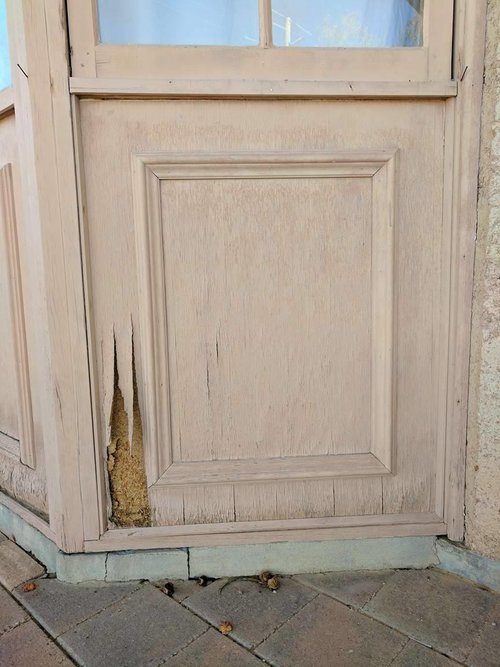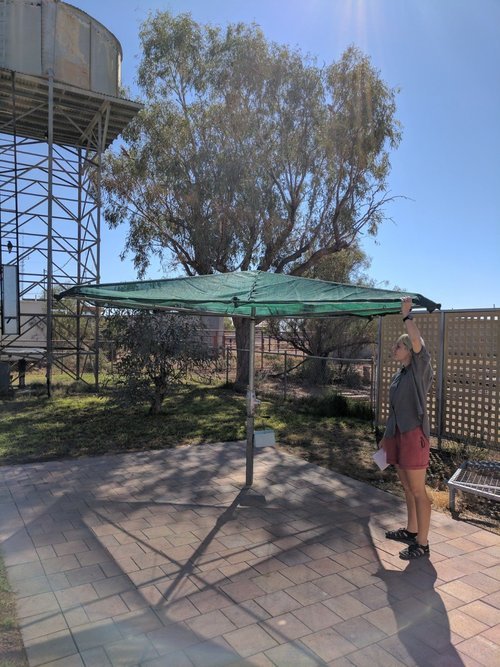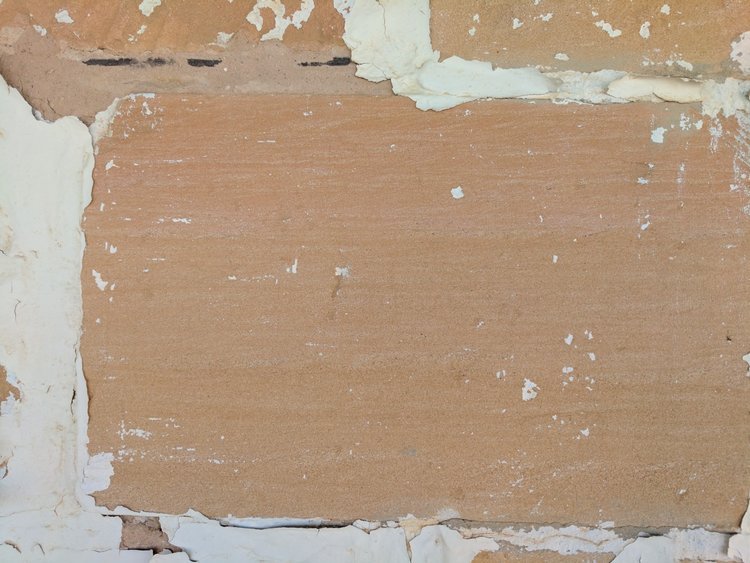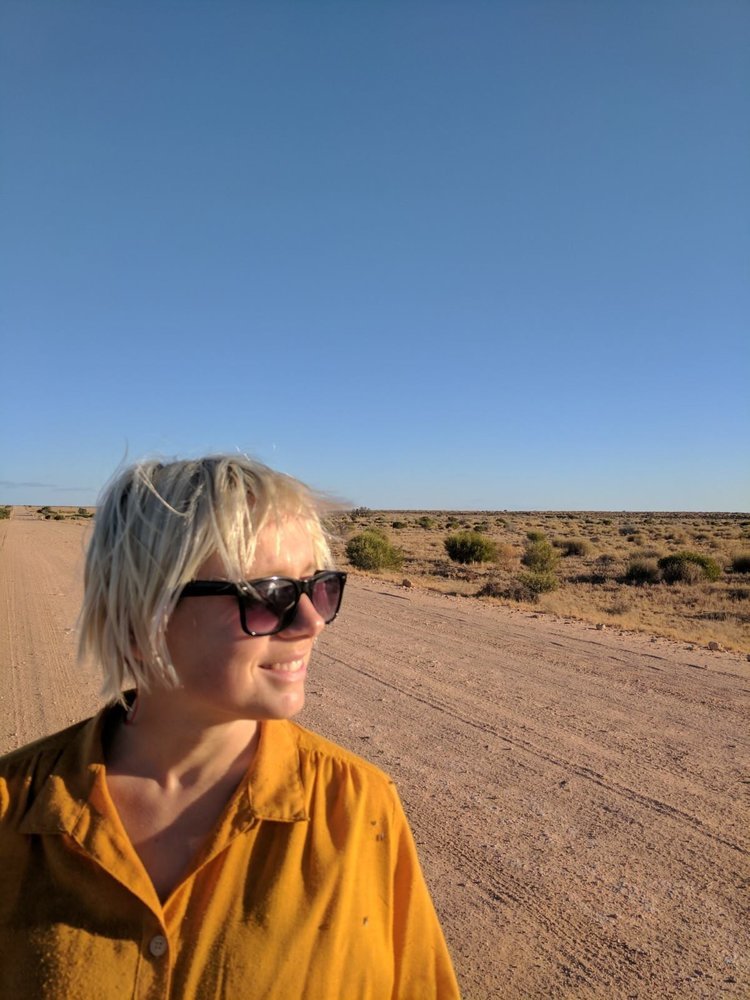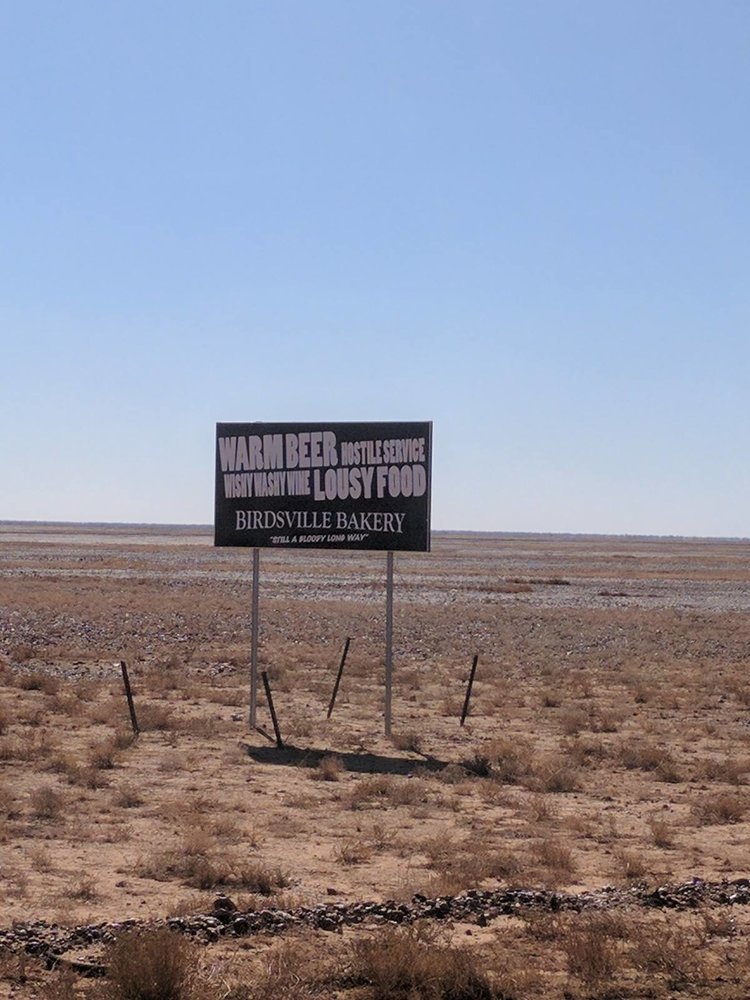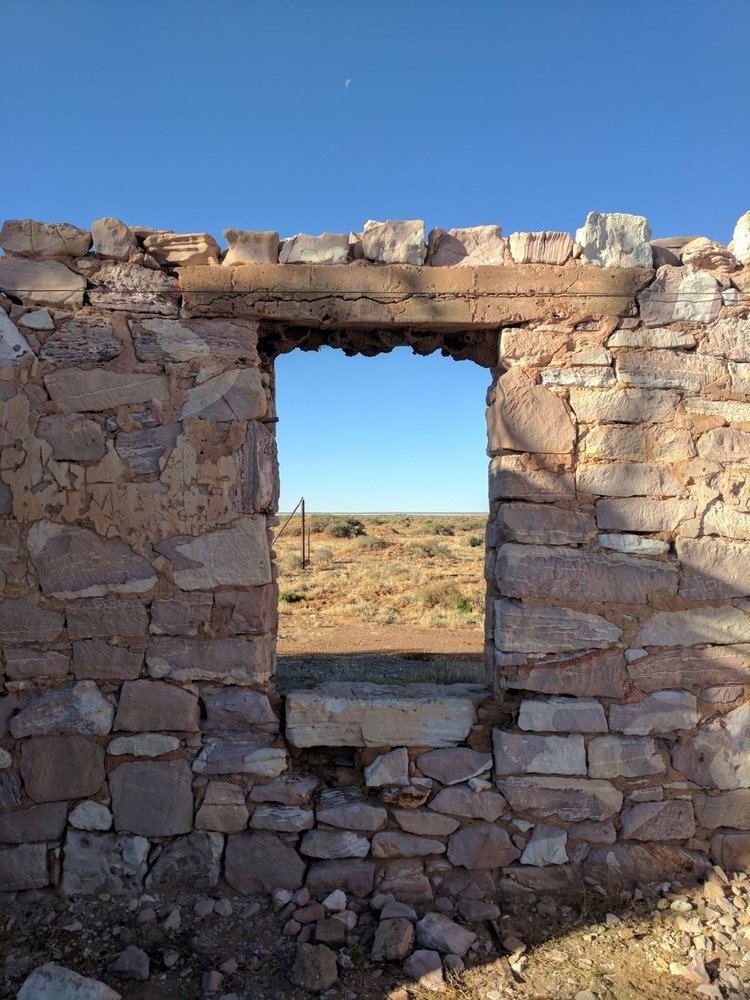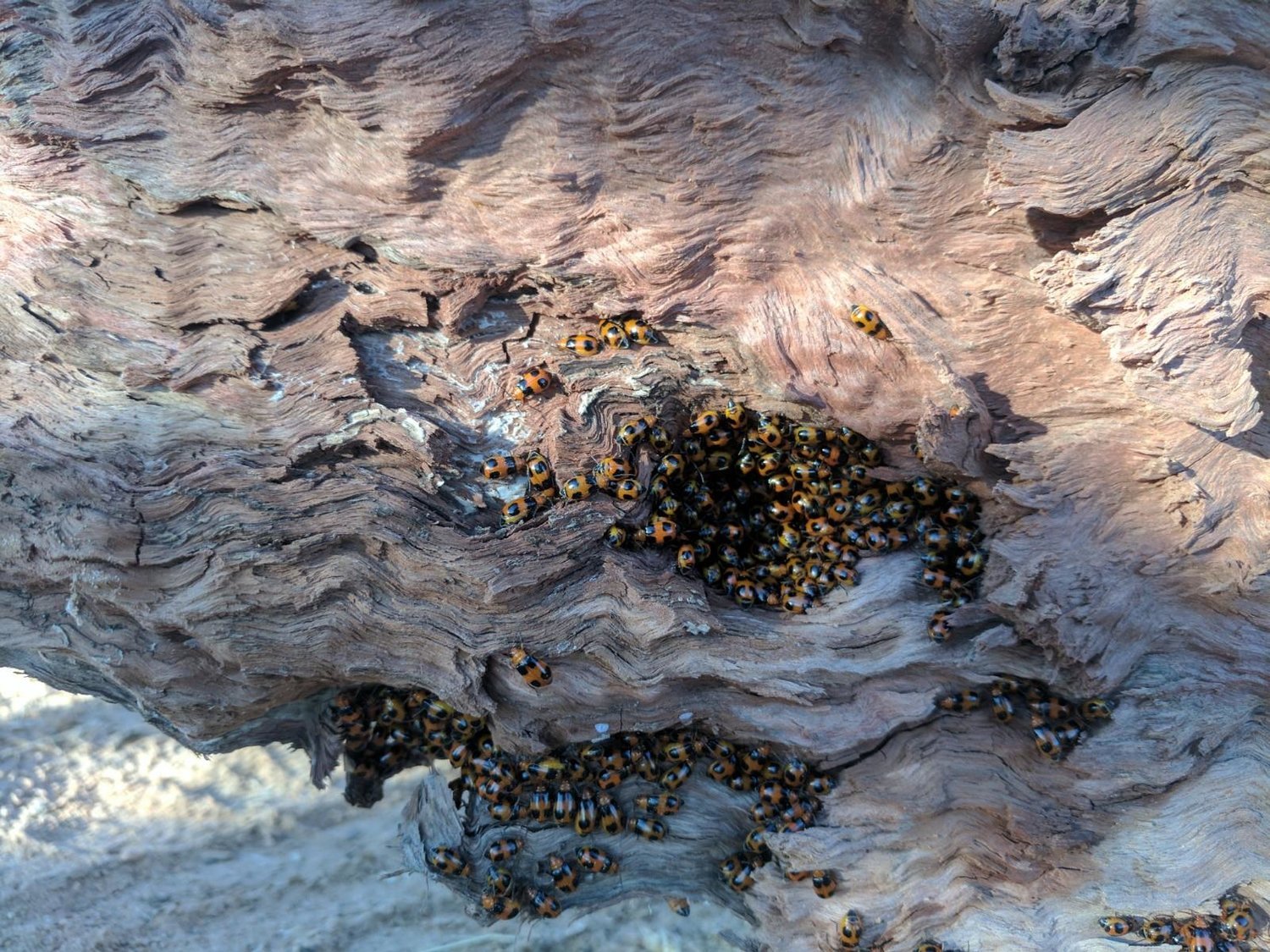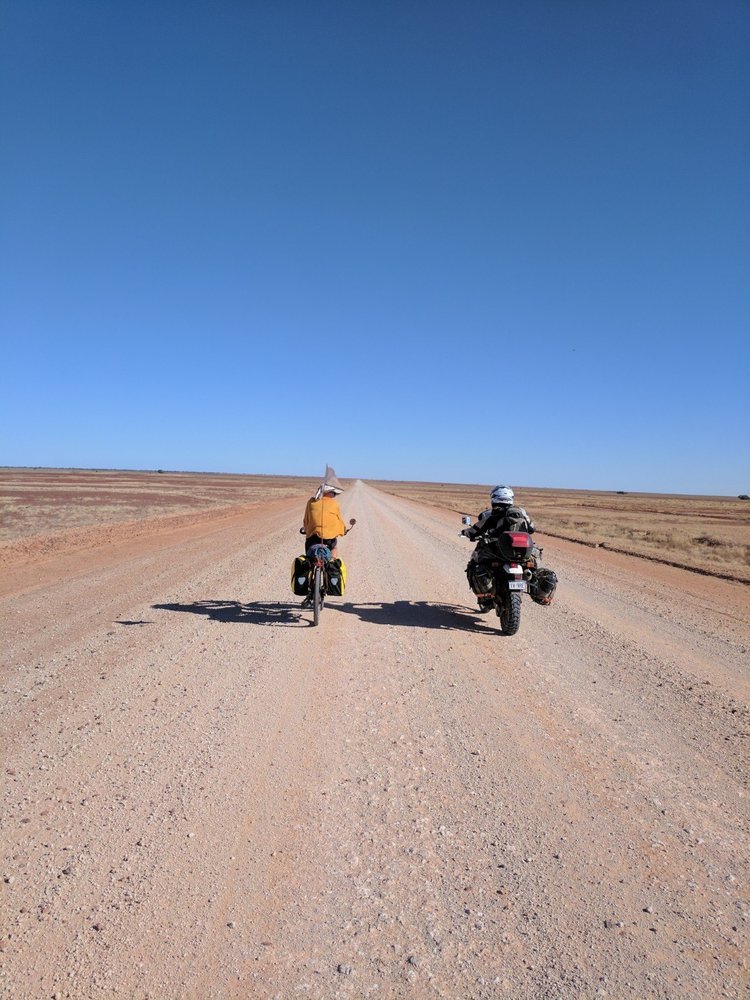The Grand Section Guardian #009 - Stop 07 Birdsville/JULY 2, 2017
Birdsville, population 115 (+/- 7000), a place of dynamic flux existing for tourism. Long affiliated locals manage the role of local, tour guide, advocate and pastoralist with apparent ease and their scarcity means they have a significant place in the community and surrounds. Stone and masonry buildings were prolific and notably novel compared to the other towns we have been. Our first glimpse of the wild Sturt’s desert pea in a town garden, was a graceful sight. Symbolic of what exists beyond the limits of 'civilisation'.
Bobbie’s father and friend and Owen’s parents and uncle joined us in the town bringing supplies and good times, a huge family affair.
PLACE
Friday 19th - 26th May
The Diamantina River system drains this already dry land, eventually ending in Lake Eyre to the south west, on average every 8 years. The Diamantina catchment covers an area of 158,000 square kilometers. This river system is made up of permanent water holes in dry periods (sometimes years) but if there is rain it can be a river that is 10 kilometers wide, this is ‘the channel country’. This ‘boom and bust’ cycle means plants have adapted and formed remarkable strategies to cope without water and respond rapidly when water is available. For instance, salt bush is prolific and has adapted to the unforgiving land incredibly. It has three phases to complete its lifespan, each needing water to ensure it stays alive. If this water doesn’t come when needed it sheds its leaves and shrivels up with all the nutrients stored in the healthy roots, waiting for when it does.
Birdsville in 'drought'...note the large increase in patrons at the hotel as well as the underage drinker, center.
These grasses and shrubs hold a huge amount of nutrients (which otherwise would go into the soil) even when dry which is why it is called “some of the best cattle fattening country in the world”. As you travel further west along latitude 25 deg south you are met with the parallel sand dunes of the Simpson Desert, some up to 20 meters high. They run north-west to south-east and house an abundance of life, crazy eh.
This desert consists of over 184 different bird species, mammals and reptiles. Zebra finches are full of life, in flocks where not much else is. All throughout this country there are gibber plains (downs). Gibbers being small polished rocks with an iron oxide coating creating sees of deep red and at times black in the landscape amongst Mitchell grass tufts. They are a remnant of the ancient landscape which has evolved and eroded. Originally the ground level was far higher, you can still see the flat topped mesas that show a glimpse of the past landscape. There was a thin hard crust of chalcedonised sandstone which over time has broken down, the softer stone and sand below eventually gets washed or blown away until the red tessellated rocky plains come to rest. In much of this country it is these gibbers that stop the fine bull dust which sits below blowing everywhere. Due to them trapping moisture in the soil, many lizards and much life live below. The gibber underworld (new movie starring Kate Beckinsale coming soon!!).
Gibber Gibber Gibber me a man after midnight! The natural tesselation of the gibbers is like an orgy of lovers.....or something. The gibbers change character just as much as the landscape.
The township of Birdsville was originally settled as a customs town in the 1880’s for entry in QLD before the states and territories were all cuddly with each other as they are today. As it lies on a major route from the bottom to top of the country those entering the state would have to pay their duty before continuing on. With a population of 115 (+/- 7000) this small town swells bi-annually for the June ‘Big Bash’ and the infamous horse race that happens in September. A town that swells in size by 700% has to have significant infrastructure, we were told by the mayor that it copes, only just. Last year the channel country swelled for that weekend stranding many tourists in the town for days, apparently they ate and drank the place dry.
People
The indigenous people of the area are the Wangkangurru/Yarluyandi tribes who formed an integral part of the north south trade route through the channel country that saw the distribution of ochre, axes and grinding stones to name a few, distributed from the Gulf of Carpentaria to the Flinders ranges; Australia’s silk road. Life was centered around the permanent and semi-permanent waterholes and soak-ages throughout the area. Song-lines and dream-time stories explain the landscapes and connect these geographical features through stories and songs, used as a navigational tool.
In addition these Song-lines weave spirituality, lore, history and learning into everyday life. This is demonstrated in the story of “Two Boys Dreaming” (ref) which details how to cross the Simpson desert.
Just to the west of Birdsville is the country the Mithaka mob (Windorah area) who are the recognised custodians. From our meetings in Windorah, and perfect timing we were lucky enough to be invited out for two days to join a big team working on and uncovering hugely exciting stuff which could change the way we think about central Australian habitation and what lies below. The team consisted of; Mithaka descendants, archaeologists, point cloud mapping specialists, a butcher, old station hands, kids, ex-military personnel (The Cameleers), a journalist, a research assistant and educators along with two architecture students (us) that happen to be rolling by. Our eyes and minds were opened, learning a great deal about rocks, identifying artifacts and dwelling remains. Serendipitous to say the least.
Bronwyn and Peter manage the local rammed earth petrol station and were a part of engaging an architect from Adelaide to design the rammed earth managers quarters adjacent the fuel/shop. Returning after the morning fuel rush, Bronwyn lent us a huge amount of her time walking around the buildings answering a the barrage of questions about the town and the rest of it. For huge juxtaposition, they spend time between a house on the lush coast and in the red center of Birdsville proper. They are symbolic of a growing trend of people who work ‘seasonally’, particularly prominent in tourist orientated towns like Birdsville.
There seems to be this new paradigm in how people live in these rural towns, nomadic in a way. However they also understand the effects this can have on a town and choose to keep the petrol station open during the “off” season, which still can service the permanent residents. Bronwyn made the point that it is the duty of the businesses to serve the townspeople, not just tourists although they are the reason for the town existing. This gives life and purpose to the town and stops it losing its identity.
Nell Brooks is a South African born Birdsvillian, marrying into the Brooks family after being charmed by David Brooks, the fourth generation of his family to be in the town. These long time locals own the Birdsville hotel and run about 3.5 million hectares in southern Queensland and South Australia, including Cordillo downs (once the biggest shearing shed in Australia).
Nell kindly welcomed us into her home and her morning tea happening at the time. We were blown away by the flux in people the house and 'lapa' has to accommodate over the course of a year; friends, family and up to 50 volunteers during the race times. Nell shared with us her deep understanding of the town, its people, its history, climate and inner workings. We witnessed a different perspective with her South African roots allowing her to see through a different lens than the locals. The Brooks are emblematic of country hospitality, manifest in their house architecture, which shows you the length these two go to helping people feel at home and supporting their local town. She was very excited by our stone zine which featured the house and some great ideas she talked of.
Don Rowlands, is a proud Wangkangurru man and the local ranger. He is one of the most prominent people responsible for documenting, sharing and keeping his culture alive for the past 30 years. He admits it is a shame that a lot of his knowledge will be lost as he is the only one that knows The Simpson Desert like the back of his hand. He talked of gunyahs, in-habitation sites and wells in the desert unknown to so many. A beautiful story teller, he shared some of his mobs dream time stories relating to astrology and way finding in the area and ways he understands the change of season by looking at the flowering acacias, emus and birds. He and his understanding of the land is highly sought after by many going in to the desert. Don is partly responsible for some of the wonderful information in Gunyahs, Goondie and Wurley, by Paul Memmott.
Stuff (Architecture)
Gibbers on the ground and Gibbers in the walls, well kind of, in its original form. The town again orientated oddly (north-west, south-east) off the cardinal points, the same as Windorah. Strangely, the same orientation of the local sand dunes, maybe it is some Illuminati scheme!?!
The amount of infrastructure in the town is significant; huge amounts of demount-able shower blocks and cabins, ready to cope with the 700% flux in population. The caravan park explodes to over 700 sites as required with a new kitchen block on its way in (on the back of a truck) as we were there. We were interested in the Besser block cabins well orientated to capture the cool southerly breezes. We were blown away by the masonry and stone used in the town. There was a notable contrast between the architecture of Birdsville and the previous towns we have visited. We came across the first two storey brick house for some time and collected a range of temperature data in the buildings and costings to understand why the stone and masonry is the case as opposed to the typical and more common demountables, dongas and transportable homes.
Concrete we were told is roughly $660/m3 (compared to $110/m3 on the coast) and so with freight of building materials, building skill and accommodation one can imagine how expensive it is to build a masonry building. Mostly though, these are built by the council and are reserved for officials in the area. Double brick with small eves, residents told us these houses performed far superior in “staying cool” once the air con was turned on.
The UV out here is the killer. Materials need to be constantly maintained and sealed, those not maintained, especially timber and clothes, just decay.
The court house is one of the finest examples of hewn sand stone used in the town. The stone work is in blocks up to 400mm thick, bound together by a gypsum mortar tuck pointed and finished with a cemented lime render. All local materials, the stone quarried on the outskirts of town, gypsum and lime too. We visited a now unused quarry which had an exposed sandstone bed and scattered chips of gypsum.
Still though, transportable homes exist. Quite high off the ground, one house had a HUGE eastern covered deck where the residents lived. South though is seemingly the winner for outdoor spaces to escape the horrific summer heat which on a summers evening is lucky to get below 30C. Night-time flushing of hot air doesn’t happen and Is generally the reason for the tacked on air con units almost swallowing the houses. On the other hand, desert winter nights are cold, and so the high diurnal change and temperature extremes is one of the major design considerations, mostly left unconsidered. That’s what air-con is for….
The rammed earth manager’s quarters was unique to the Birdsville, an earnest attempt to live without the ubiquitous air-con. Apparently though it doesn’t work in the summers. It does work in maintaining the temperature once air con is used but the lack of eaves where required to stop sun penetrating walls, awning windows restricted opening and neglected timber make it ineffective in cooling down the house.
The high average temperature and low diurnal change of the Birdsville summer means the masonry walls don’t get a chance to cool down, re-enter center stage…air-con. However we were told the house works beautifully in winter! The house has two great bough shade roofs to outdoor spaces covered in light gauge wire with cane grass or other branches placed on top. Add a sprinkler in the hot weather and you’ve got yourself a fantastic evaporative cooling system.
On a side note there seems to be a critical lack of understanding about how thermal mass works in many places we have seen. It is common that people are aware that a slab on the ground provides better insulating properties than a raised floor “relocatable” however the effective use of thermal mass seems to be missing.
Thermal Mass principals for cold times. Note the heat inside the building.
Thermal Mass principals for hot hot hot times. Eves block heat from entering and cross ventilation removes heat from inside.
Exhibition
Due to our time in Birdsville being somewhat sporadic from family visiting and us going out to join the Mithaka crew for a few days we thought the best approach for us would be another zine, handed out around town to the locals we had met. Appropriately titled ‘The Stone Weekly, regularly unregularly’ (the first and most likely last issue), we focused on the stone and masonry of the town including our data and costing gathering. A small token that we hope blurred the line of tourist and made their time invested in us somewhat worthwhile.
In BETWEEN(in reflection) - Birdsville to Maree
519 klms!! Our biggest in-between period yet. The prevailing winds we’ve encountered on the trip thus far are south east, fine when you’re riding east to west – somewhat of a tailwind. Due to our change of heading effectively (looking at the map) taking a left turn at Birdsville to avoid the 1200 Simpson Desert sand hills, the prevailing tail wind changed to a HEAD WIND! Gravel, gibber and washboard roads, a 10km/h average speed, with a side of chilled wind and sprinkled with evenings below zero, it has been our hardest stretch yet.
Lucky though we have Owen’s father Wayne with us at the moment in the car to help carry water, canned food and sweet sweet firewood as its getting scarce, so logistics have been a little easier for us in the long distances between towns.
The landscape though is remarkable. The roads although on the driest part and ‘worst’ of the country was beautiful, unforgiving and dramatic. We travelled through three different deserts; Sturt’s Stony Desert, Strezleki and Tirari deserts, at times the road separating a different desert on either side.
Confusing to us that although these landscapes are classified ‘deserts’, there was so much life. Grasses, huge amounts of fertility, fat cattle, prolific zebra finches and water bodies both dried and half full. Traveling along we would come through flood plains, some stretching 10kms, which was a huge contrast, almost a different world. Solid, strong Coolibah trees 300 or so years old. They were huge, with big limbs reaching out and up and filled these areas. Lots of undergrowth, shade and hence vast amounts of animal life.
The last day we had 32kms left to ride, staying in old ruins of an experimental date palm plantation from the 19th Century it was the best spirits we had embarked into the day with yet. We arrived, overjoyed and excited by the sight of civilization of Maree, we rode a bit faster. The hard length had come to an end.
The usual. To the pub; chips, gravy and toasted cheese sandwiches.
Edited by the lovely Jen Richards!
Keep those legs pumping!
Dusty & Thirsty





